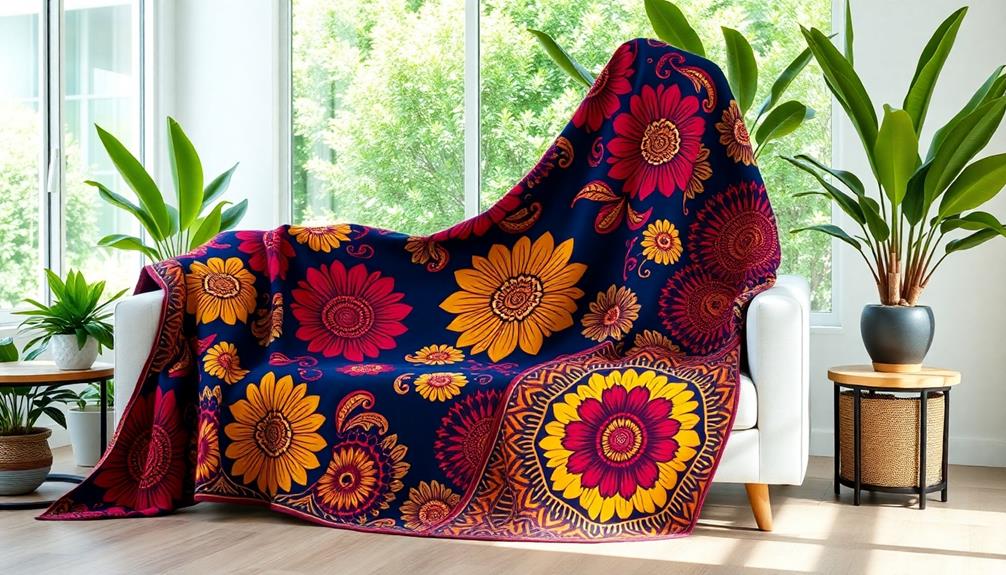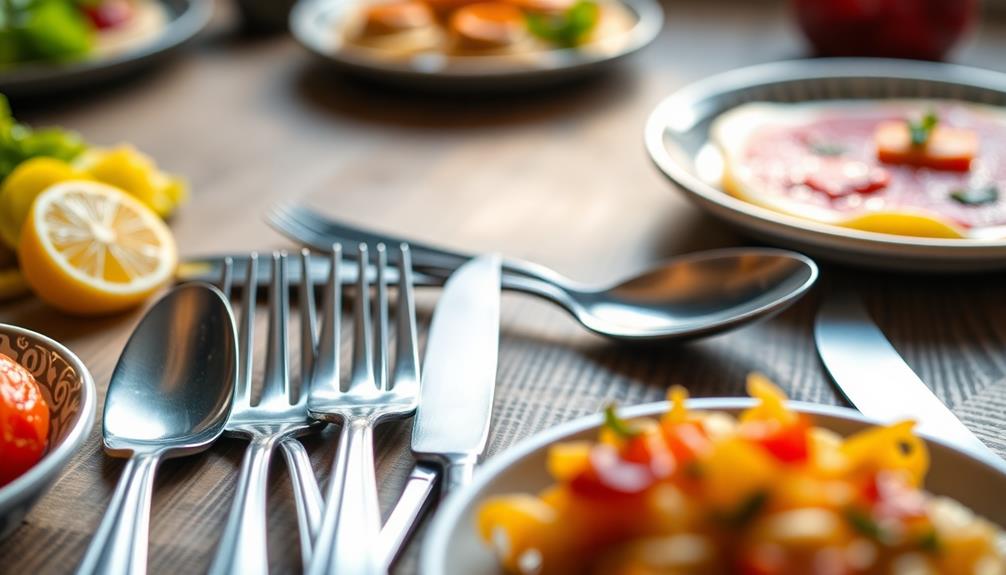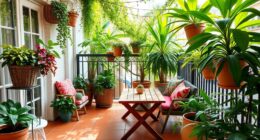Batik patterns are making waves in modern home design, and you're likely to see specific motifs that resonate deeply. The Parang and Kawung designs are favorites among designers; they symbolize power and prosperity, respectively. You'll find these vibrant patterns not just on fabrics but also as stunning wall hangings and accent pieces that add a cultural richness to your space. With their unique ability to harmonize with various styles from bohemian to minimalist, batik continues to bridge traditional artistry and contemporary decor. Explore how these patterns can elevate your interior style in fascinating new ways.
Key Takeaways
- Parang and Kawung patterns are popular choices, symbolizing power and prosperity while adding cultural depth to modern interiors.
- Batik-inspired fabrics are frequently used for cushions, throws, and accent pieces, enhancing home decor with vibrant colors and intricate designs.
- Designers often modernize traditional batik motifs to appeal to contemporary aesthetics, bridging the gap between heritage and modernity.
- Batik wall hangings serve as striking focal points, showcasing craftsmanship and enriching the visual narrative of living spaces.
- The integration of batik patterns in home decor supports sustainable practices and celebrates Indonesia's rich cultural heritage.
Understanding Batik Patterns
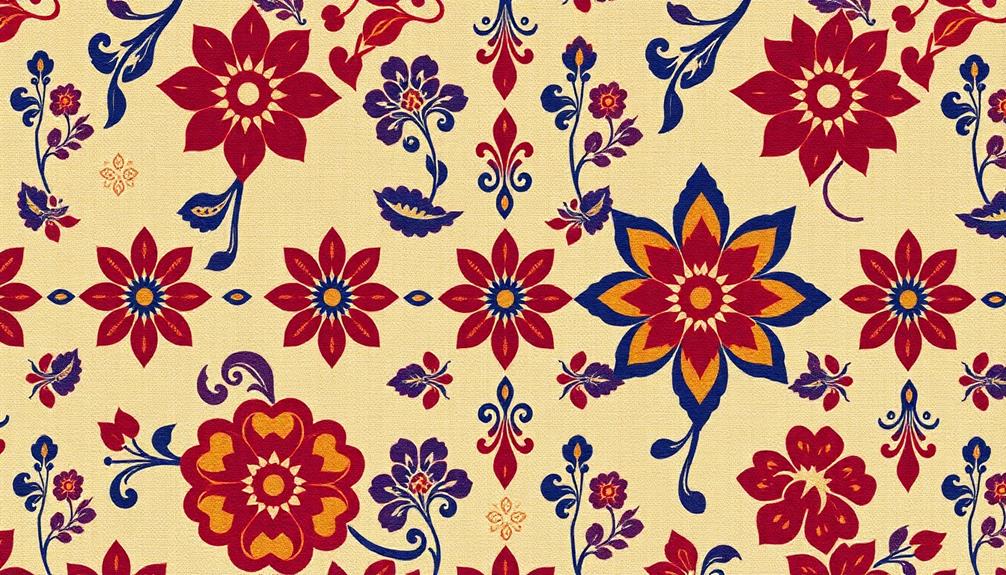
As you explore the world of batik patterns, you'll discover that these intricate designs are more than just beautiful art; they often carry deep symbolic meanings. Each batik design reflects traditional motifs rooted in Indonesian culture, conveying messages about history, nature, and social status.
For example, the Parang symbolizes power and protection, while the Kawung represents fertility and prosperity. Additionally, many batik patterns share similarities with traditional artistry of Indonesian decor masks, enhancing the cultural richness of the region's art forms.
You'll notice that batik patterns are created using various techniques, like Batik Tulis (hand-drawn) and Batik Cap (stamped), showcasing unique artistic expressions. This complexity not only highlights the skill of the artisans but also the cultural heritage embodied in each piece.
Contemporary batik merges these traditional motifs with modern aesthetics, appealing to younger audiences and making it a popular choice for home decor.
The Resurgence of Batik
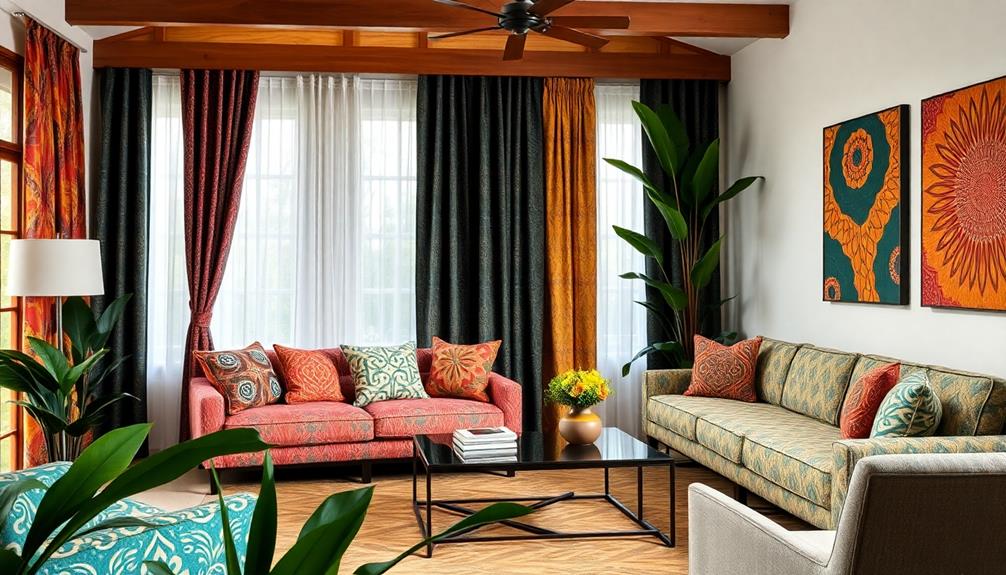
Batik is experiencing a revival, largely thanks to the enthusiasm of the younger generation. You'll find cultural engagement initiatives like Remaja Nusantara promoting its significance, sparking interest in traditional patterns. Modern fashion designers are weaving batik into contemporary clothing, showcasing its versatility for both casual and formal styles.
Local brands like Sejauh Mata Memandang and bateeq are making batik more accessible, emphasizing sustainable practices and local craftsmanship. This approach not only preserves the art form but also aligns with today's eco-conscious values. Floral imagery in batik designs, especially in batik-cheongsam styles, has gained popularity among Chinese Indonesians during celebrations, highlighting its cultural adaptability.
The international recognition of batik is on the rise, as it's spotted on global fashion stages, worn by celebrities and featured in collections by renowned designers. This resurgence of batik isn't just a trend; it's a celebration of heritage and innovation merging beautifully.
| Aspect | Traditional Batik | Modern Interpretations |
|---|---|---|
| Cultural Engagement | Rich heritage | Youth initiatives |
| Fashion Application | Formal wear | Casual styles |
| Craftsmanship | Handcrafted | Sustainable practices |
| Design Elements | Traditional motifs | Contemporary aesthetics |
| Global Appeal | Local significance | International recognition |
Batik's Influence on Design
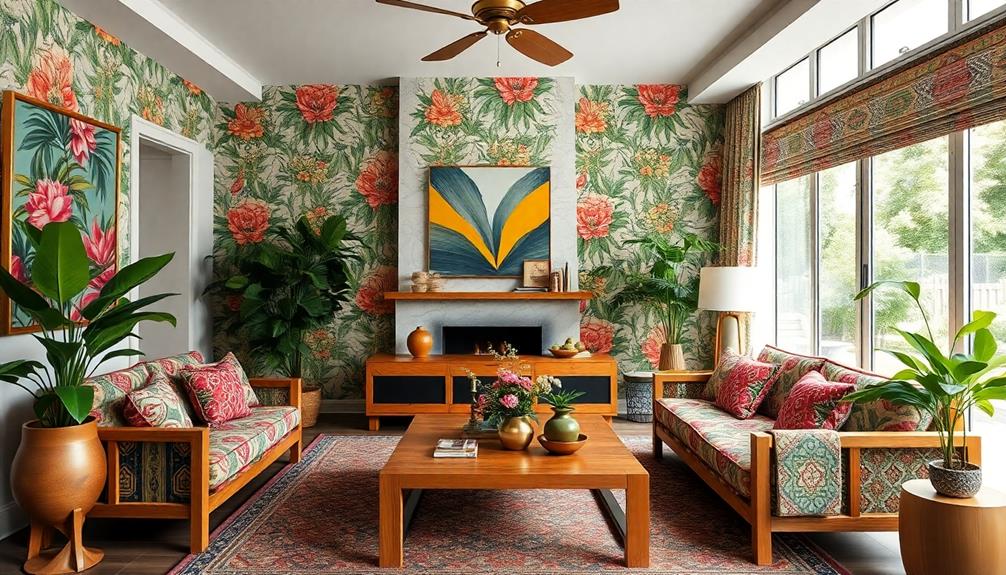
Incorporating batik patterns into modern home decor transforms spaces with a unique blend of tradition and innovation. You'll find that these vibrant designs serve as accent pieces, enhancing the aesthetic appeal of various interior styles, whether contemporary or bohemian.
Designers like Chitra Subyaktos are modernizing batik to resonate with newer generations, while luxury brands like Schumacher elevate home decor with batik-inspired fabrics. Additionally, the use of colorful Indonesian decorative pillows can complement batik patterns beautifully, creating a cohesive look within your living space.
The versatility of batik enriches your design themes, adding depth and texture through unique patterns. By integrating batik into your home, you not only celebrate its rich cultural heritage but also appreciate its artistic value. This traditional artistry reflects the craftsmanship of local artisans, supporting sustainable practices in the process.
As you explore batik patterns, you'll discover how they can seamlessly blend with your existing decor, making them a popular choice for those seeking to infuse their spaces with character and history. Whether you’re drawn to the rich, earthy tones of traditional batik patterns or the more contemporary, vibrant designs, there is a wide range of options to choose from. Whether you’re looking for a statement piece to hang on your wall or a subtle accent in the form of throw pillows or table linens, batik patterns can add warmth and personality to any room. With their timeless appeal and cultural significance, it’s no wonder that batik patterns continue to be a beloved choice for home decor enthusiasts.
Embracing batik in your interior design journey allows you to create a warm, inviting atmosphere that honors tradition while embracing the modern aesthetic.
Modern Applications in Interiors
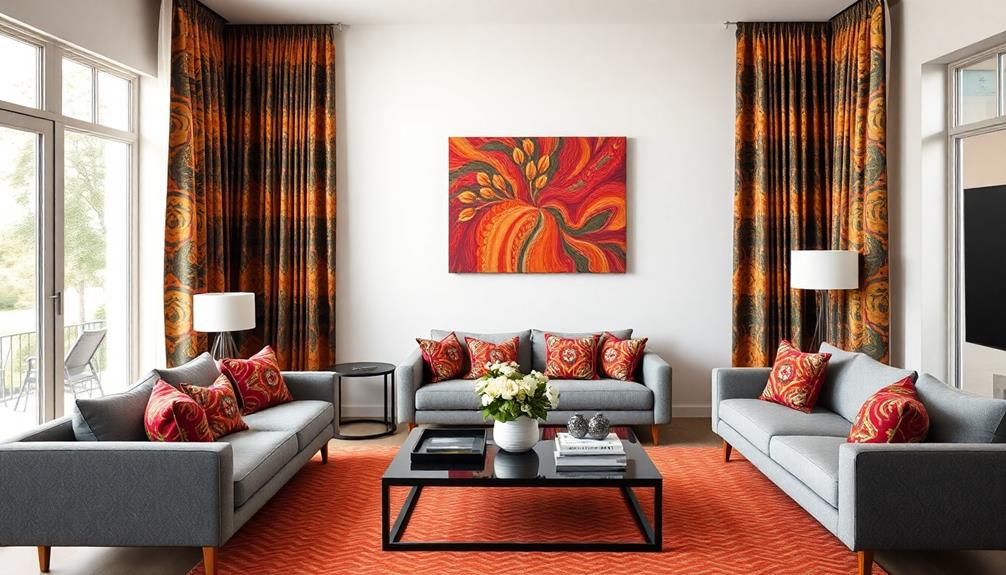
The use of batik in modern interiors has become a game-changer for those looking to add a touch of cultural richness to their spaces. You'll find that incorporating batik patterns elevates your interior design by introducing traditional artistry in a fresh, contemporary way.
Think about using batik-inspired fabrics for accent pieces like throws, cushions, and curtains—these elements add depth without overwhelming your decor. Additionally, the integration of Indonesian decor masks can complement batik designs, further enhancing the cultural narrative of your home.
Its versatility allows batik to harmonize with various design aesthetics, from bohemian to minimalist. You can easily enhance neutral spaces, making them feel more inviting and vibrant.
Batik wall hangings serve as stunning focal points in your home decor, showcasing the intricate designs that reflect both cultural heritage and artisanal craftsmanship.
As you explore modern applications of batik in your interiors, consider how this textile art can transform your living spaces. Whether it's through upholstery or decorative accents, the growing trend highlights batik's adaptability and enduring relevance.
Cultural Significance of Batik

Discovering the cultural significance of batik opens a window into Indonesia's rich heritage. This traditional Indonesian textile showcases intricate designs and motifs that reflect the community's values and history. Recognized by UNESCO as an Intangible Cultural Heritage, batik is more than just fabric; it embodies storytelling through its unique patterns.
| Motif Name | Symbolic Meaning | Cultural Importance |
|---|---|---|
| Parang | Strength and resilience | Represents social status |
| Kawung | Spiritual purity | Reflects virtues in society |
| Mega Mendung | Hope and prosperity | Connects generations |
| Cuwiri | Balance and harmony | Highlights community bonds |
Each batik motif serves as a form of symbolic imagery, carrying narratives that resonate through generations. The craftsmanship involved in creating batik is labor-intensive, emphasizing the dedication to preserving cultural heritage. As you explore modern applications of batik, remember that these designs are rooted in a deep cultural significance, making them not just decorative pieces, but essential expressions of identity and storytelling. Embrace this vibrant art form, and appreciate the stories woven within every thread.
Frequently Asked Questions
What Is the Modern Pattern of Batik?
The modern pattern of batik features simplified geometric designs and natural motifs. You'll notice floral imagery, abstract shapes, and monochromatic color schemes, all blending tradition with contemporary aesthetics for versatile applications in your home decor.
What Is the Most Famous Batik Pattern?
When you think of famous batik patterns, the Parang often comes to mind. Its zigzag design symbolizes power and protection, making it a significant motif in Indonesian culture and widely recognized in various artistic expressions.
What Is Batik Used for Today?
You'll find batik gracing your living spaces today, transforming ordinary items into vibrant statements. It's draped over cushions, curtains, and upholstery, offering a delightful blend of tradition and modern flair that enhances any decor.
What Are the 5 Major Types of Batik Design?
You'll find five major types of batik design: Batik Tulis, Batik Cap, Batik Lukis, Batik Pesisir, and Batik Belanda. Each showcases unique techniques and cultural influences, reflecting the rich heritage of this art form.
Conclusion
As you explore the world of batik patterns, you'll discover their rich cultural heritage and modern appeal in interior design. Curiously, a recent survey found that 65% of designers now incorporate batik elements into their projects, showcasing its popularity. This resurgence not only brings vibrant colors and intricate designs into homes but also fosters a deeper appreciation for the artistry behind batik. So, why not embrace this trend and add a touch of batik to your space?
